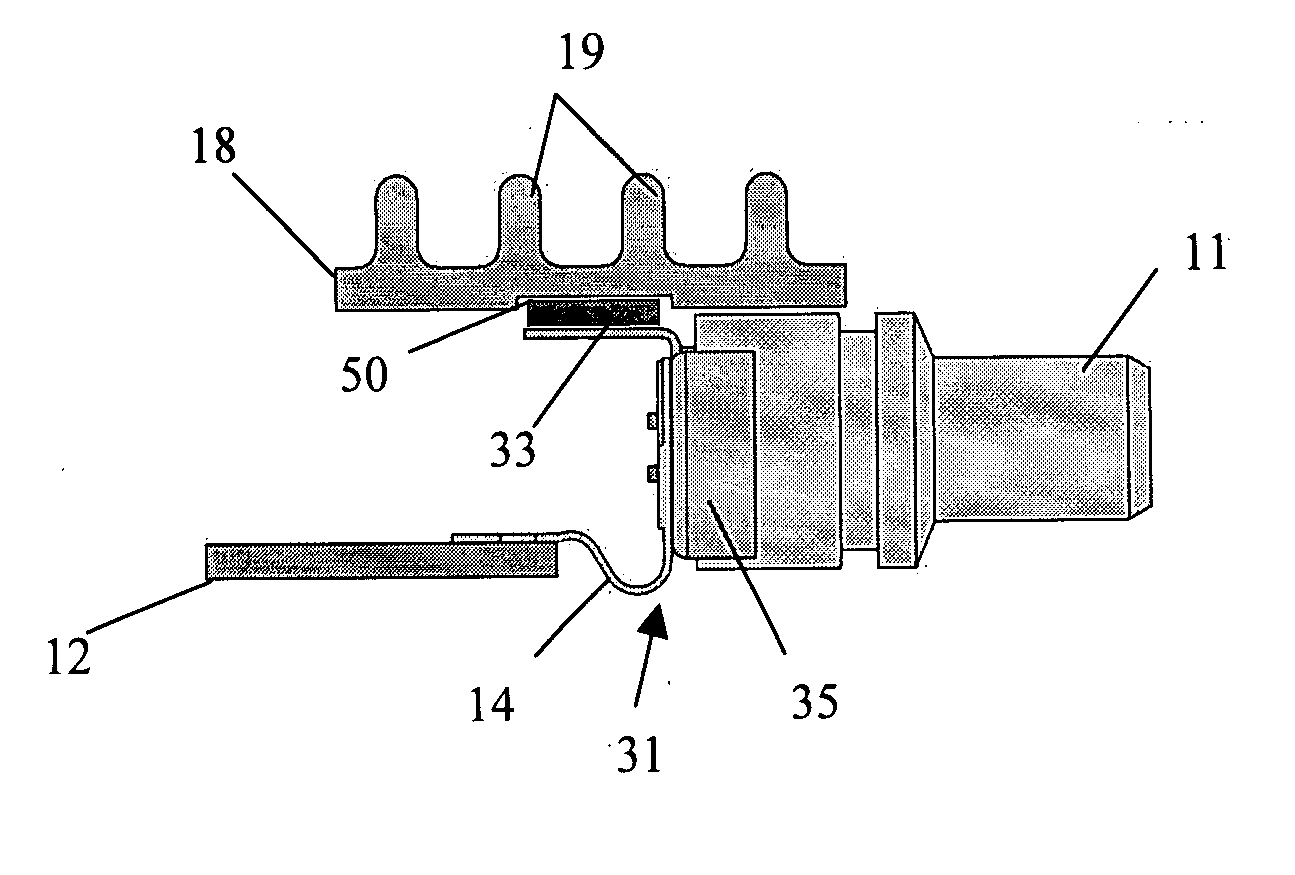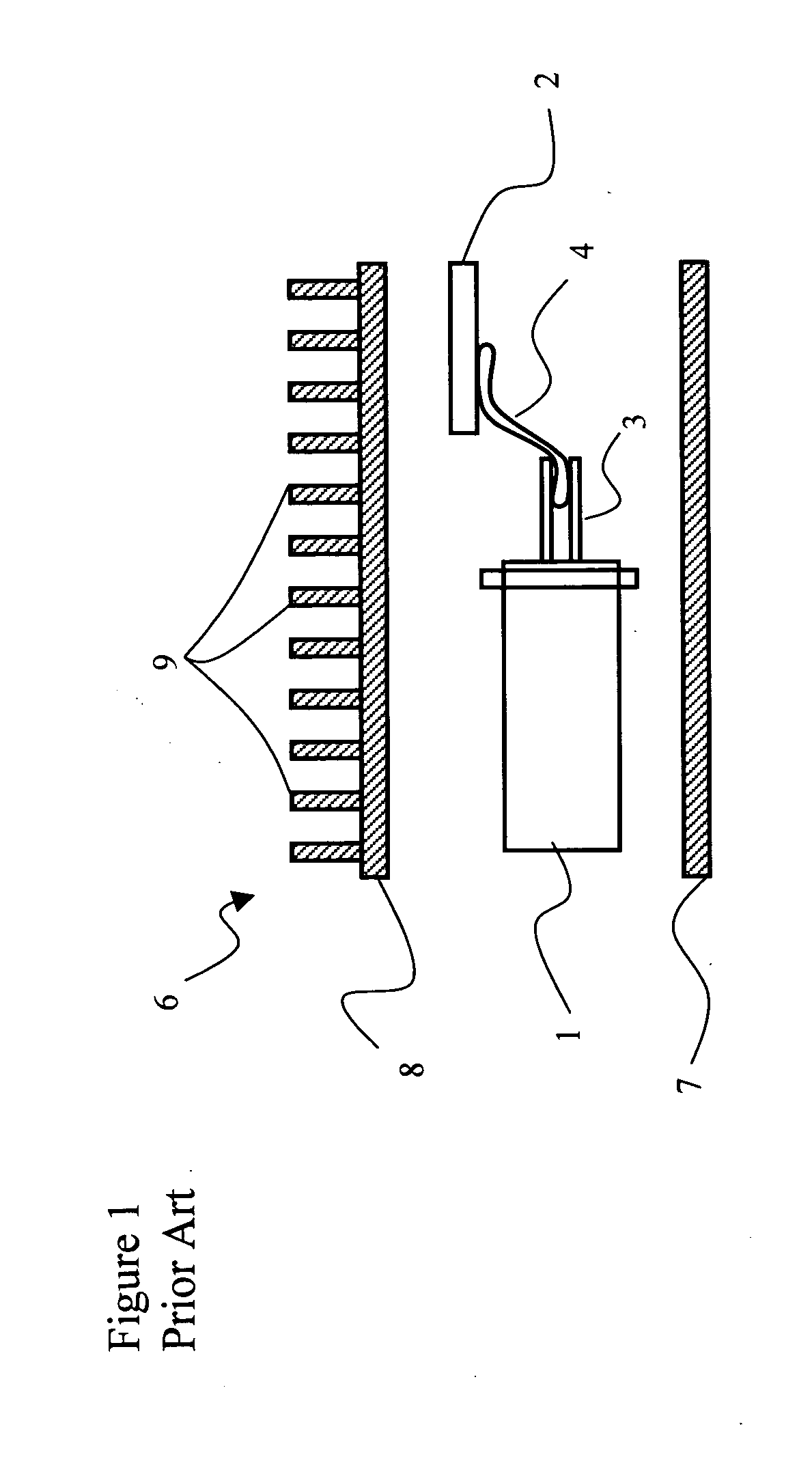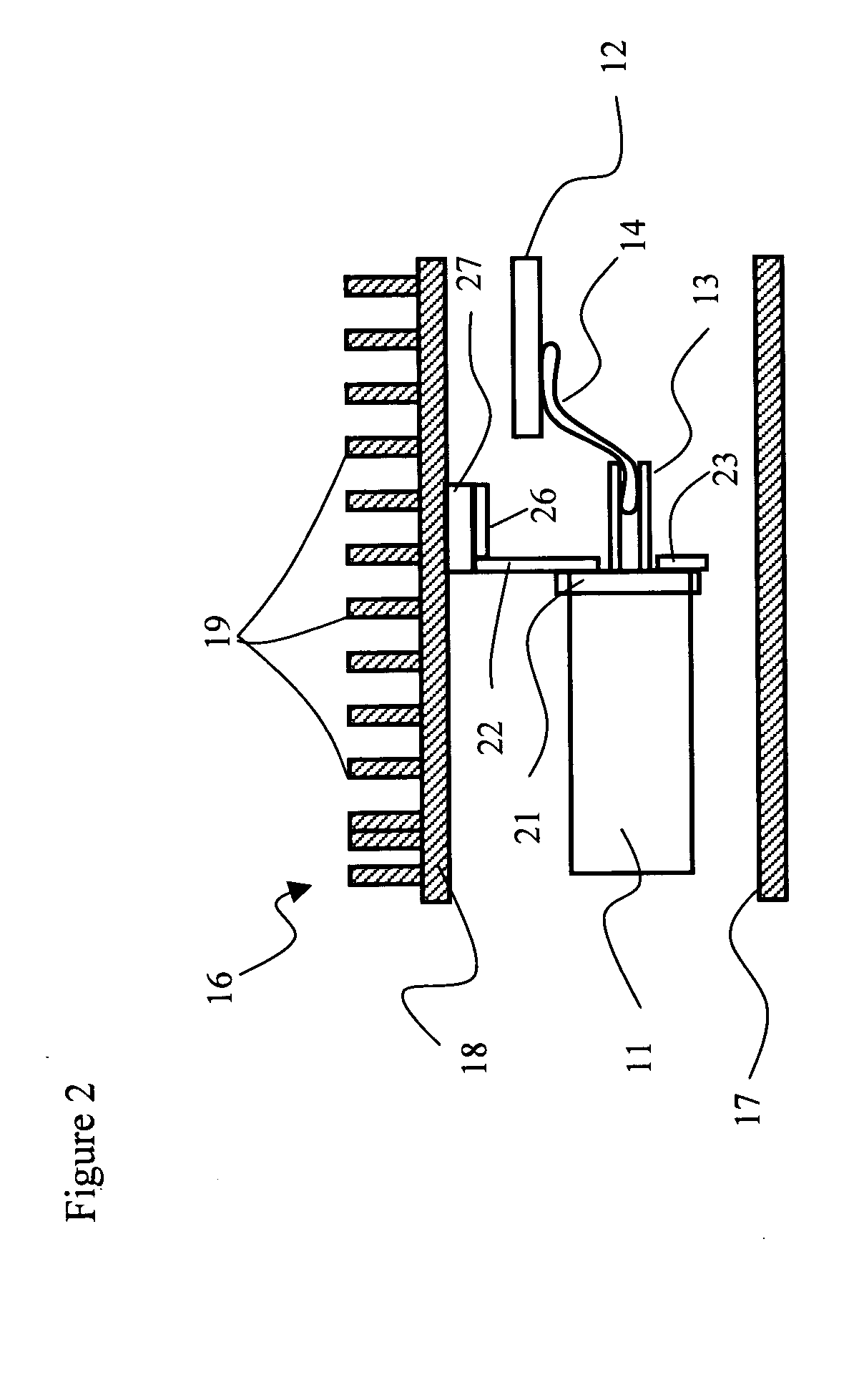Heat sink tab for optical sub-assembly
a technology of optical sub-assembly and sink tab, which is applied in the direction of optical elements, electrical apparatus casings/cabinets/drawers, instruments, etc., can solve the problems of increasing undesirable heat, which must be removed, and achieve the effect of reducing the amount of hea
- Summary
- Abstract
- Description
- Claims
- Application Information
AI Technical Summary
Benefits of technology
Problems solved by technology
Method used
Image
Examples
Embodiment Construction
[0025] With reference to FIG. 2, a transceiver according to the present invention includes a TOSA (not shown) and a ROSA 11, which are electrically connected to PCB 12 via metal leads 13 and a flex cable 14. The TOSA and the ROSA 11 include an optical connector on the front end thereof for receiving an end of an optical fiber. A housing 16 encloses the TOSA and the ROSA 11, and includes a lower case 17 and an upper case 18. The upper case 18 includes heat sinking fins 19, although other suitable heat sinking elements are possible, for dissipating heat generated within the housing 16. Typically, an electrical connector is formed on the outer free end of the PCB 12 for electrically connecting the transceiver to a host device, although other electrical connectors, such as pins, are possible.
[0026] Each OSA includes a header 21 extending from the back end thereof, through which the leads 13 extend. A heat sinking tab 22 is mounted on the header 21 with a suitable thermal interface, e.g...
PUM
 Login to View More
Login to View More Abstract
Description
Claims
Application Information
 Login to View More
Login to View More - R&D
- Intellectual Property
- Life Sciences
- Materials
- Tech Scout
- Unparalleled Data Quality
- Higher Quality Content
- 60% Fewer Hallucinations
Browse by: Latest US Patents, China's latest patents, Technical Efficacy Thesaurus, Application Domain, Technology Topic, Popular Technical Reports.
© 2025 PatSnap. All rights reserved.Legal|Privacy policy|Modern Slavery Act Transparency Statement|Sitemap|About US| Contact US: help@patsnap.com



